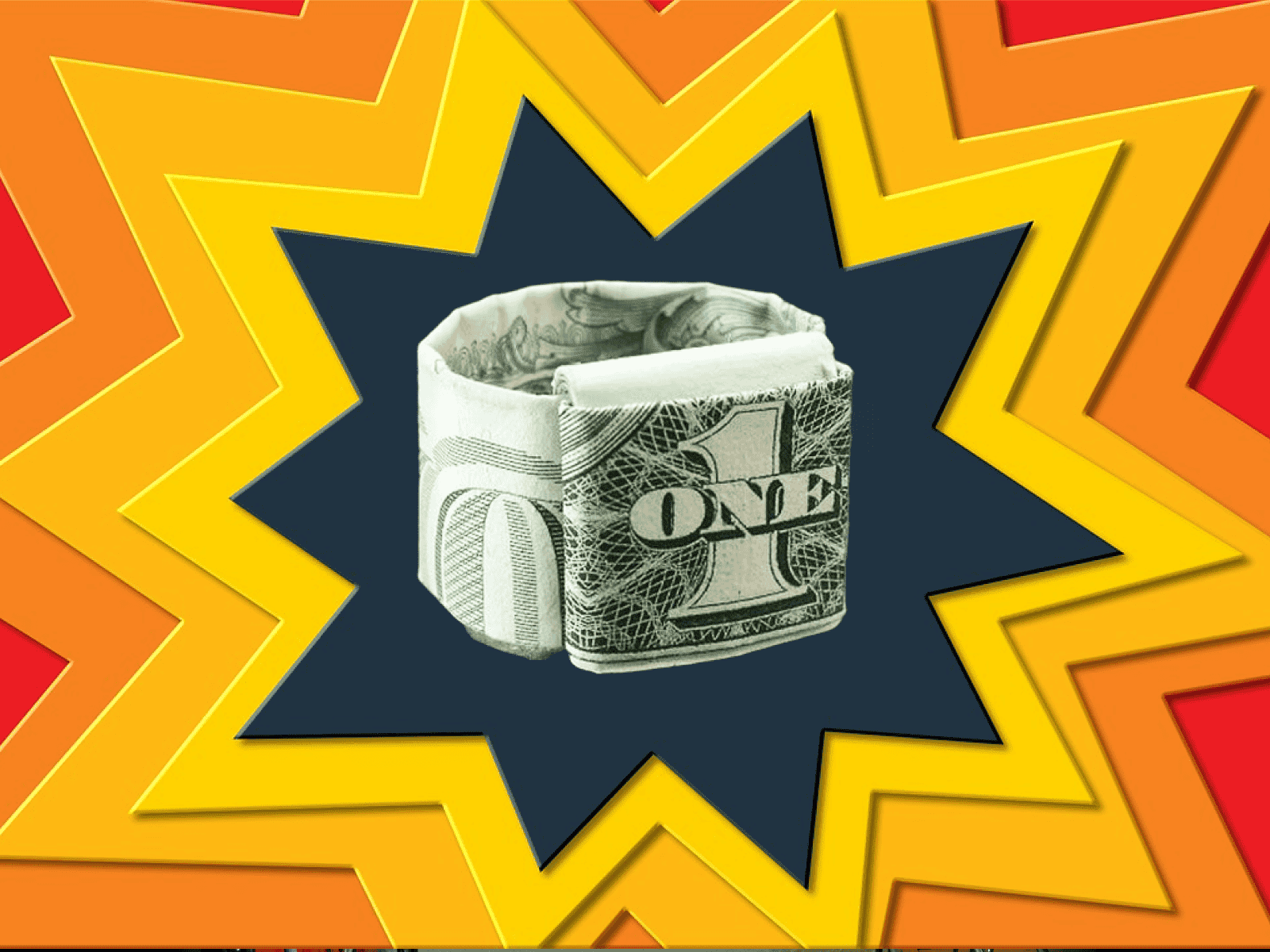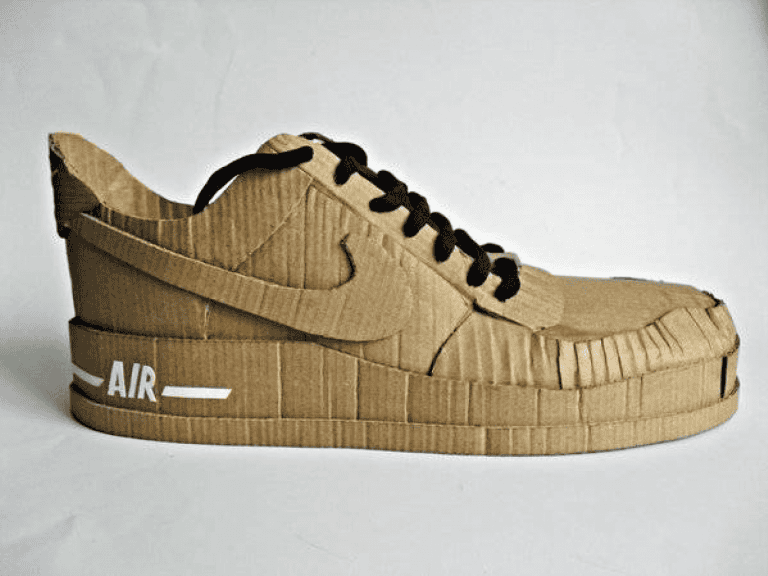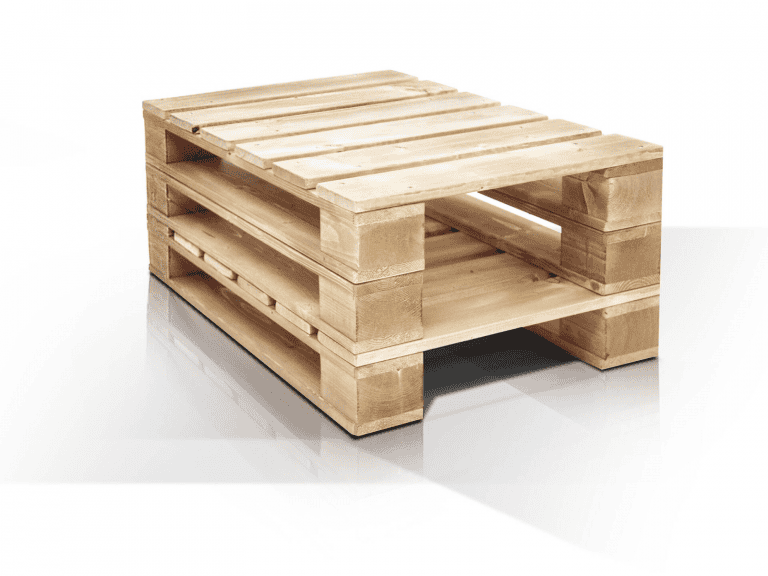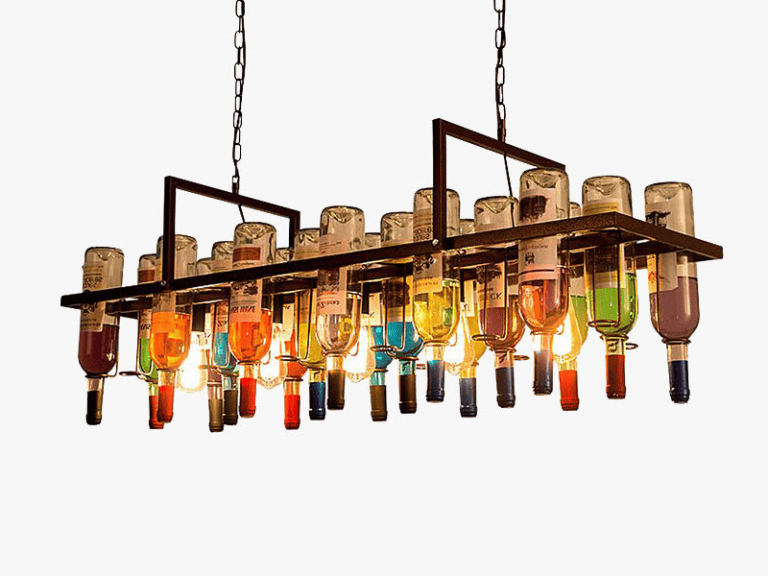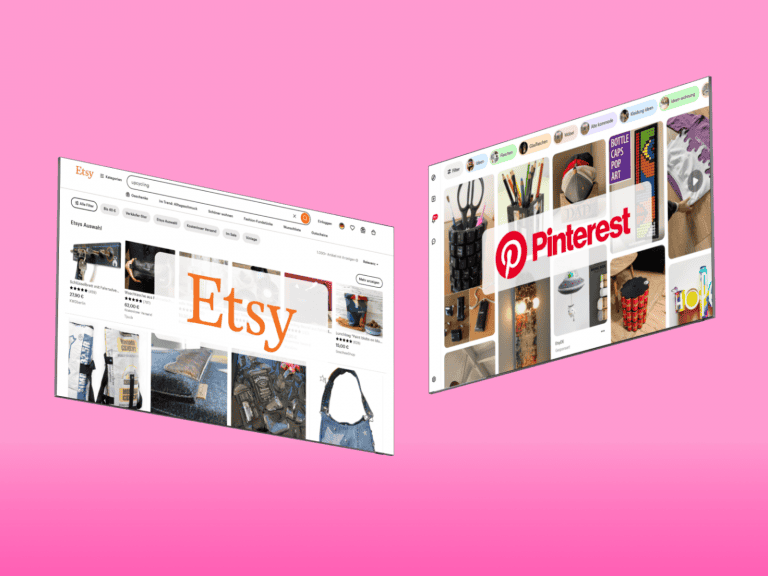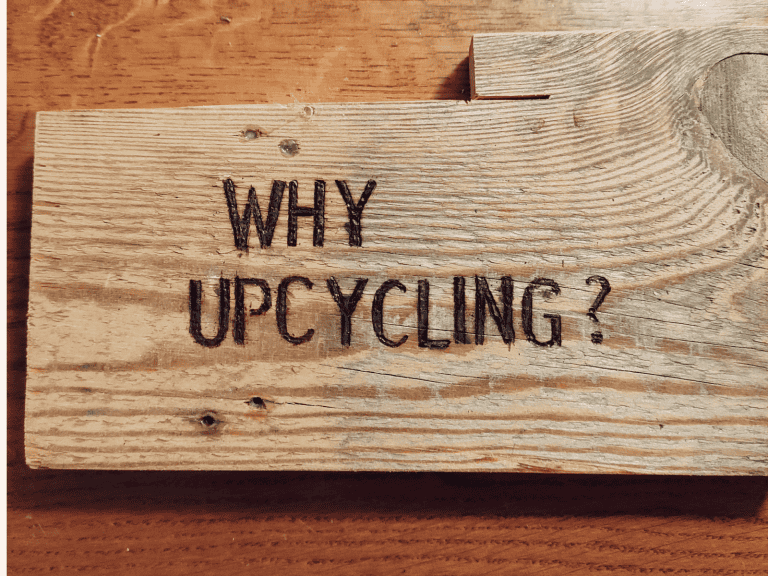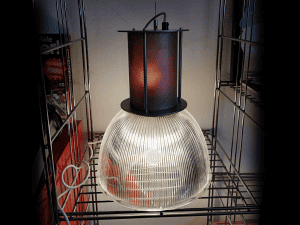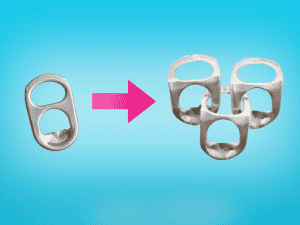Anyone involved in upcycling has probably wondered: Can you get rich from upcycling? The idea of transforming old, unused items into beautiful, unique creations is incredibly appealing. It’s a chance to combine creativity with sustainability—and maybe even turn it into a lucrative business. But is it really possible to make a fortune this way? Let’s find out!
In this article:
- The Dream of Big Money
- The Reality of the Upcycling Business
- The Reality of the Market: Why Upcycling Isn’t Always Profitable
- Two Left Hands, But I Love Upcycling
- Upcycling as a Creative Project, But Not a Path to Wealth
- Is the Dream of Living a Happy Life and Only from Upcycling Now Dead?
The Dream of Big Money
The main reason many people get into upcycling is probably not to make quick money, but rather for the enjoyment and pride of creating something new from old materials. Not to mention the minimal material costs – upcycling often means transforming seemingly worthless things into something beautiful and unique. And of course, there are people willing to pay for such pieces.
Sooner or later, the thought will arise:
“With all this work and such a great idea, this must be worth something! Maybe I should quit my job and become an upcycling designer. That way, I can pay off my mortgage and send my kids to piano lessons!”
The thought keeps growing:
“I could buy the kids new Nike shoes and upcycle their old shoes into cool lamps. Three pairs of shoes, six lamps at 100 euros each. Incredible, what a business!”
Suddenly, it feels like adrenaline is rushing through your body. The villa, the new designer clothes, the luxury life – it all seems within reach. But how realistic is this dream?
The Reality of the Upcycling Business
Unfortunately, we quickly return to the reality check. Let’s look at a typical example: the pallet table. It’s so popular that it’s now even sold as new in furniture stores.
To build such a table, you first need to find two well-preserved pallets – not a big deal, right? But that’s just the beginning. Then you need to clean, sand, and treat the pallets to protect the wood. After that, you’ll need wheels to make the table mobile and a tabletop – maybe a glass top or wooden planks.
Let’s say you need a total of 20 hours – including sourcing materials, transport, and craftsmanship. And a fair hourly wage of 25 euros. That quickly adds up to:
500 euros for labor
100 euros for the glass top
100 euros for the wheels, screws, etc.
500 euros markup to finance your business
So the pallet table costs 1,200 euros in total – and shipping is extra. A price of 1,300 euros for a pallet table. Would you buy such a table for that price? Probably not. And many others won’t either, even if the table looks super cool.
The Reality of the Market: Why Is Upcycling Not Always Profitable?
Sure, there may be people willing to pay that price for a “real” pallet table, but the market is small, and demand is limited. Most people would rather build the table themselves for much less money. They buy the pallets, a glass top, and wheels with the “DIY” mindset – and save a lot.
Of course, it’s not really upcycling if you buy everything new. But the table looks just as good, and the person saves around 1,000 euros. Those are the harsh facts.
Two Left Hands, But I Love Upcycling
Not everyone wants or can do upcycling themselves. Some people love upcycled products but don’t have the time or interest to do it themselves. Maybe they lack the craftsmanship skills, or they just don’t feel like searching through the trash for materials.
These people are often willing to pay for upcycled items. And they’re happy buyers! Because they get unique pieces they wouldn’t be able to create on their own.
Of course, it could happen that when friends come over, the question arises: “Did you make that chandelier out of old wine bottles yourself?” The answer might be honest or less so. But in the end, it’s about appreciating the creative value – and that can be done even if you’re not the one being creative or doing the handiwork.
Upcycling as a Creative Project, but Not a Way to Get Rich
Upcycling is definitely a great way to express creativity and create unique pieces. It can also help you earn some extra income or even fund your living. But getting rich from it is probably not in the cards – unless you have a deep understanding of the market and entrepreneurship. And even then, success isn’t determined just by craftsmanship but also by smart business strategies.
Ultimately, the true value of upcycling lies not in money, but in the fact that you’ve created something unique that would have otherwise ended up in the trash. An invaluable feeling.
Is the Dream of Leading a Happy Life and Living Only from Upcycling Now Dead?
Dreams are meant to be dreamed – and for some, they may even come true. But is the dream of living only from upcycling truly unreachable?

Source: Pixabay
Only very few bathe in money through upcycling
Maybe not. If you simply want to know whether your upcycling ideas are unique and if people would pay for them, Etsy is a great place to get a first look at the market. Etsy is a global marketplace that’s open to non-commercial sellers and offers many upcycled products.
You can check if there are similar items and what price they are being sold for. You can also just list your own works there. Set your desired price and see if your offers attract interest. If you notice there’s interest but no sales, it could be the price. A small adjustment and you might be on the right track!
Pinterest is also an excellent source for finding inspiration and seeing if your upcycling works get clicks. This can give you insight into how well your ideas are received and how often they’re shared or saved.
Of course, the path to success isn’t always easy. But with motivation, passion, and a clear vision, much can be achieved. Financial success isn’t just a dream for everyone. Many examples show that it’s possible to live from upcycling with creativity and perseverance.
In conclusion, no matter why you love upcycling – it’s valuable and fun. It’s a joy that can’t just be bought with money. And perhaps that’s where the true wealth of upcycling lies.
Anyone involved in upcycling has probably wondered: Can you get rich from upcycling? The idea of transforming old, unused items into beautiful, unique creations is incredibly appealing. It’s a chance to combine creativity with sustainability—and maybe even turn it into a lucrative business. But is it really possible to make a fortune this way? Let’s find out!
In this article:
- The Dream of Big Money
- The Reality of the Upcycling Business
- The Reality of the Market: Why Upcycling Isn’t Always Profitable
- Two Left Hands, But I Love Upcycling
- Upcycling as a Creative Project, But Not a Path to Wealth
- Is the Dream of Living a Happy Life and Only from Upcycling Now Dead?
The Dream of Big Money
The main reason many people get into upcycling is probably not to make quick money, but rather for the enjoyment and pride of creating something new from old materials. Not to mention the minimal material costs – upcycling often means transforming seemingly worthless things into something beautiful and unique. And of course, there are people willing to pay for such pieces.
Sooner or later, the thought will arise: “With all this work and such a great idea, this must be worth something! Maybe I should quit my job and become an upcycling designer. That way, I can pay off my mortgage and send my kids to piano lessons!”
The thought keeps growing: “I could buy the kids new Nike shoes and upcycle their old shoes into cool lamps. Three pairs of shoes, six lamps at 100 euros each. Incredible, what a business!”
Suddenly, it feels like adrenaline is rushing through your body. The villa, the new designer clothes, the luxury life – it all seems within reach. But how realistic is this dream?
The Reality of the Upcycling Business
Unfortunately, we quickly return to the reality check. Let’s look at a typical example: the pallet table. It’s so popular that it’s now even sold as new in furniture stores.
To build such a table, you first need to find two well-preserved pallets – not a big deal, right? But that’s just the beginning. Then you need to clean, sand, and treat the pallets to protect the wood. After that, you’ll need wheels to make the table mobile and a tabletop – maybe a glass top or wooden planks.
Let’s say you need a total of 20 hours – including sourcing materials, transport, and craftsmanship. And a fair hourly wage of 25 euros. That quickly adds up to:
500 euros for labor
100 euros for the glass top
100 euros for the wheels, screws, etc.
500 euros markup to finance your business
So the pallet table costs 1,200 euros in total – and shipping is extra. A price of 1,300 euros for a pallet table. Would you buy such a table for that price? Probably not. And many others won’t either, even if the table looks super cool.
The Reality of the Market: Why Is Upcycling Not Always Profitable?
Sure, there may be people willing to pay that price for a “real” pallet table, but the market is small, and demand is limited. Most people would rather build the table themselves for much less money. They buy the pallets, a glass top, and wheels with the “DIY” mindset – and save a lot.
Of course, it’s not really upcycling if you buy everything new. But the table looks just as good, and the person saves around 1,000 euros. Those are the harsh facts.
Two Left Hands, But I Love Upcycling
Not everyone wants or can do upcycling themselves. Some people love upcycled products but don’t have the time or interest to do it themselves. Maybe they lack the craftsmanship skills, or they just don’t feel like searching through the trash for materials.
These people are often willing to pay for upcycled items. And they’re happy buyers! Because they get unique pieces they wouldn’t be able to create on their own.
Of course, it could happen that when friends come over, the question arises: “Did you make that chandelier out of old wine bottles yourself?” The answer might be honest or less so. But in the end, it’s about appreciating the creative value – and that can be done even if you’re not the one being creative or doing the handiwork.
Upcycling as a Creative Project, but Not a Way to Get Rich
Upcycling is definitely a great way to express creativity and create unique pieces. It can also help you earn some extra income or even fund your living. But getting rich from it is probably not in the cards – unless you have a deep understanding of the market and entrepreneurship. And even then, success isn’t determined just by craftsmanship but also by smart business strategies.
Ultimately, the true value of upcycling lies not in money, but in the fact that you’ve created something unique that would have otherwise ended up in the trash. An invaluable feeling.
Is the Dream of Leading a Happy Life and Living Only from Upcycling Now Dead?
Dreams are meant to be dreamed – and for some, they may even come true. But is the dream of living only from upcycling truly unreachable?
Maybe not. If you simply want to know whether your upcycling ideas are unique and if people would pay for them, Etsy is a great place to get a first look at the market. Etsy is a global marketplace that’s open to non-commercial sellers and offers many upcycled products. You can check if there are similar items and what price they are being sold for. You can also just list your own works there. Set your desired price and see if your offers attract interest. If you notice there’s interest but no sales, it could be the price. A small adjustment and you might be on the right track!
Pinterest is also an excellent source for finding inspiration and seeing if your upcycling works get clicks. This can give you insight into how well your ideas are received and how often they’re shared or saved.
Of course, the path to success isn’t always easy. But with motivation, passion, and a clear vision, much can be achieved. Financial success isn’t just a dream for everyone. Many examples show that it’s possible to live from upcycling with creativity and perseverance.
In conclusion, no matter why you love upcycling – it’s valuable and fun. It’s a joy that can’t just be bought with money. And perhaps that’s where the true wealth of upcycling lies.
Anyone involved in upcycling has probably wondered: Can you get rich from upcycling? The idea of transforming old, unused items into beautiful, unique creations is incredibly appealing. It’s a chance to combine creativity with sustainability—and maybe even turn it into a lucrative business. But is it really possible to make a fortune this way? Let’s find out!
In this article:
- The Dream of Big Money
- The Reality of the Upcycling Business
- The Reality of the Market: Why Upcycling Isn’t Always Profitable
- Two Left Hands, But I Love Upcycling
- Upcycling as a Creative Project, But Not a Path to Wealth
- Is the Dream of Living a Happy Life and Only from Upcycling Now Dead?
The Dream of Big Money
The main reason many people get into upcycling is probably not to make quick money, but rather for the enjoyment and pride of creating something new from old materials. Not to mention the minimal material costs – upcycling often means transforming seemingly worthless things into something beautiful and unique. And of course, there are people willing to pay for such pieces.
Sooner or later, the thought will arise: “With all this work and such a great idea, this must be worth something! Maybe I should quit my job and become an upcycling designer. That way, I can pay off my mortgage and send my kids to piano lessons!”
The thought keeps growing: “I could buy the kids new Nike shoes and upcycle their old shoes into cool lamps. Three pairs of shoes, six lamps at 100 euros each. Incredible, what a business!”
Suddenly, it feels like adrenaline is rushing through your body. The villa, the new designer clothes, the luxury life – it all seems within reach. But how realistic is this dream?
The Reality of the Upcycling Business
Unfortunately, we quickly return to the reality check. Let’s look at a typical example: the pallet table. It’s so popular that it’s now even sold as new in furniture stores.
To build such a table, you first need to find two well-preserved pallets – not a big deal, right? But that’s just the beginning. Then you need to clean, sand, and treat the pallets to protect the wood. After that, you’ll need wheels to make the table mobile and a tabletop – maybe a glass top or wooden planks.
Let’s say you need a total of 20 hours – including sourcing materials, transport, and craftsmanship. And a fair hourly wage of 25 euros. That quickly adds up to:
500 euros for labor
100 euros for the glass top
100 euros for the wheels, screws, etc.
500 euros markup to finance your business
So the pallet table costs 1,200 euros in total – and shipping is extra. A price of 1,300 euros for a pallet table. Would you buy such a table for that price? Probably not. And many others won’t either, even if the table looks super cool.
The Reality of the Market: Why Is Upcycling Not Always Profitable?
Sure, there may be people willing to pay that price for a “real” pallet table, but the market is small, and demand is limited. Most people would rather build the table themselves for much less money. They buy the pallets, a glass top, and wheels with the “DIY” mindset – and save a lot.
Of course, it’s not really upcycling if you buy everything new. But the table looks just as good, and the person saves around 1,000 euros. Those are the harsh facts.
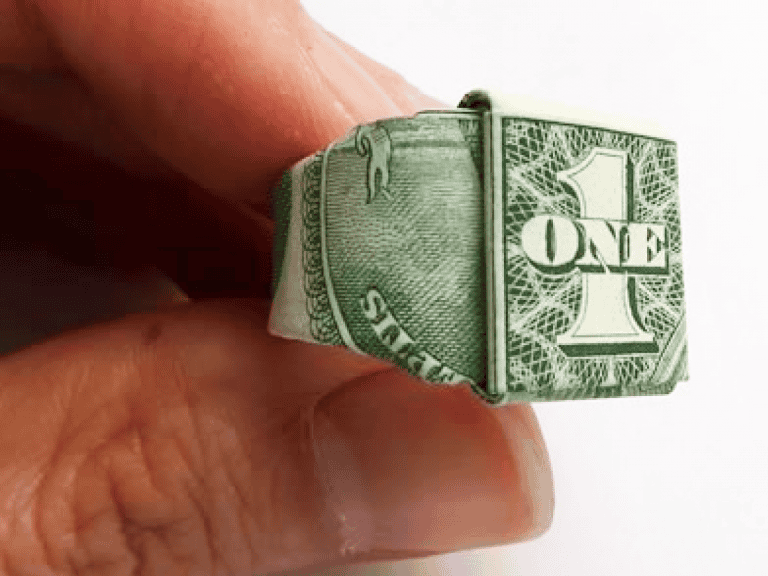
Source: Homemade gifts made easy
What could this ring possibly cost?
Two Left Hands, But I Love Upcycling
Not everyone wants or can do upcycling themselves. Some people love upcycled products but don’t have the time or interest to do it themselves. Maybe they lack the craftsmanship skills, or they just don’t feel like searching through the trash for materials.
These people are often willing to pay for upcycled items. And they’re happy buyers! Because they get unique pieces they wouldn’t be able to create on their own.
Of course, it could happen that when friends come over, the question arises: “Did you make that chandelier out of old wine bottles yourself?” The answer might be honest or less so. But in the end, it’s about appreciating the creative value – and that can be done even if you’re not the one being creative or doing the handiwork.
Upcycling as a Creative Project, but Not a Way to Get Rich
Upcycling is definitely a great way to express creativity and create unique pieces. It can also help you earn some extra income or even fund your living. But getting rich from it is probably not in the cards – unless you have a deep understanding of the market and entrepreneurship. And even then, success isn’t determined just by craftsmanship but also by smart business strategies.
Ultimately, the true value of upcycling lies not in money, but in the fact that you’ve created something unique that would have otherwise ended up in the trash. An invaluable feeling.
Is the Dream of Leading a Happy Life and Living Only from Upcycling Now Dead?
Dreams are meant to be dreamed – and for some, they may even come true. But is the dream of living only from upcycling truly unreachable?
Maybe not. If you simply want to know whether your upcycling ideas are unique and if people would pay for them, Etsy is a great place to get a first look at the market. Etsy is a global marketplace that’s open to non-commercial sellers and offers many upcycled products. You can check if there are similar items and what price they are being sold for. You can also just list your own works there. Set your desired price and see if your offers attract interest. If you notice there’s interest but no sales, it could be the price. A small adjustment and you might be on the right track!
Pinterest is also an excellent source for finding inspiration and seeing if your upcycling works get clicks. This can give you insight into how well your ideas are received and how often they’re shared or saved.
Of course, the path to success isn’t always easy. But with motivation, passion, and a clear vision, much can be achieved. Financial success isn’t just a dream for everyone. Many examples show that it’s possible to live from upcycling with creativity and perseverance.
In conclusion, no matter why you love upcycling – it’s valuable and fun. It’s a joy that can’t just be bought with money. And perhaps that’s where the true wealth of upcycling lies.
Can You Get Rich from Upcycling?
Anyone involved in upcycling has probably dreamed of making it big with their creative projects. The idea of turning old, useless items into beautiful, one-of-a-kind creations is tempting. But can you really get rich from it? Let’s take a look!
In this article:
- The Dream of Big Money
- The Reality of the Upcycling Business
- The Reality of the Market: Why Upcycling Isn’t Always Profitable
- Two Left Hands, But I Love Upcycling
- Upcycling as a Creative Project, But Not a Path to Wealth
- Is the Dream of Living a Happy Life and Only from Upcycling Now Dead?
The Dream of Big Money

Caption
The main reason many people get into upcycling is probably not to make quick money, but rather for the enjoyment and pride of creating something new from old materials. Not to mention the minimal material costs – upcycling often means transforming seemingly worthless things into something beautiful and unique. And of course, there are people willing to pay for such pieces.
Sooner or later, the thought will arise: “With all this work and such a great idea, this must be worth something! Maybe I should quit my job and become an upcycling designer. That way, I can pay off my mortgage and send my kids to piano lessons!”
The thought keeps growing: “I could buy the kids new Nike shoes and upcycle their old shoes into cool lamps. Three pairs of shoes, six lamps at 100 euros each. Incredible, what a business!”
Suddenly, it feels like adrenaline is rushing through your body. The villa, the new designer clothes, the luxury life – it all seems within reach. But how realistic is this dream?
The Reality of the Upcycling Business
Unfortunately, we quickly return to the reality check. Let’s look at a typical example: the pallet table. It’s so popular that it’s now even sold as new in furniture stores.
To build such a table, you first need to find two well-preserved pallets – not a big deal, right? But that’s just the beginning. Then you need to clean, sand, and treat the pallets to protect the wood. After that, you’ll need wheels to make the table mobile and a tabletop – maybe a glass top or wooden planks.
Let’s say you need a total of 20 hours – including sourcing materials, transport, and craftsmanship. And a fair hourly wage of 25 euros. That quickly adds up to:
500 euros for labor
100 euros for the glass top
100 euros for the wheels, screws, etc.
500 euros markup to finance your business
So the pallet table costs 1,200 euros in total – and shipping is extra. A price of 1,300 euros for a pallet table. Would you buy such a table for that price? Probably not. And many others won’t either, even if the table looks super cool.
The Reality of the Market: Why Is Upcycling Not Always Profitable?
Sure, there may be people willing to pay that price for a “real” pallet table, but the market is small, and demand is limited. Most people would rather build the table themselves for much less money. They buy the pallets, a glass top, and wheels with the “DIY” mindset – and save a lot.
Of course, it’s not really upcycling if you buy everything new. But the table looks just as good, and the person saves around 1,000 euros. Those are the harsh facts.
Two Left Hands, But I Love Upcycling
Not everyone wants or can do upcycling themselves. Some people love upcycled products but don’t have the time or interest to do it themselves. Maybe they lack the craftsmanship skills, or they just don’t feel like searching through the trash for materials.
These people are often willing to pay for upcycled items. And they’re happy buyers! Because they get unique pieces they wouldn’t be able to create on their own.
Of course, it could happen that when friends come over, the question arises: “Did you make that chandelier out of old wine bottles yourself?” The answer might be honest or less so. But in the end, it’s about appreciating the creative value – and that can be done even if you’re not the one being creative or doing the handiwork.
Upcycling as a Creative Project, but Not a Way to Get Rich
Upcycling is definitely a great way to express creativity and create unique pieces. It can also help you earn some extra income or even fund your living. But getting rich from it is probably not in the cards – unless you have a deep understanding of the market and entrepreneurship. And even then, success isn’t determined just by craftsmanship but also by smart business strategies.
Ultimately, the true value of upcycling lies not in money, but in the fact that you’ve created something unique that would have otherwise ended up in the trash. An invaluable feeling.
Is the Dream of Leading a Happy Life and Living Only from Upcycling Now Dead?
Dreams are meant to be dreamed – and for some, they may even come true. But is the dream of living only from upcycling truly unreachable?
Maybe not. If you simply want to know whether your upcycling ideas are unique and if people would pay for them, Etsy is a great place to get a first look at the market. Etsy is a global marketplace that’s open to non-commercial sellers and offers many upcycled products. You can check if there are similar items and what price they are being sold for. You can also just list your own works there. Set your desired price and see if your offers attract interest. If you notice there’s interest but no sales, it could be the price. A small adjustment and you might be on the right track!
Pinterest is also an excellent source for finding inspiration and seeing if your upcycling works get clicks. This can give you insight into how well your ideas are received and how often they’re shared or saved.
Of course, the path to success isn’t always easy. But with motivation, passion, and a clear vision, much can be achieved. Financial success isn’t just a dream for everyone. Many examples show that it’s possible to live from upcycling with creativity and perseverance.
In conclusion, no matter why you love upcycling – it’s valuable and fun. It’s a joy that can’t just be bought with money. And perhaps that’s where the true wealth of upcycling lies.
